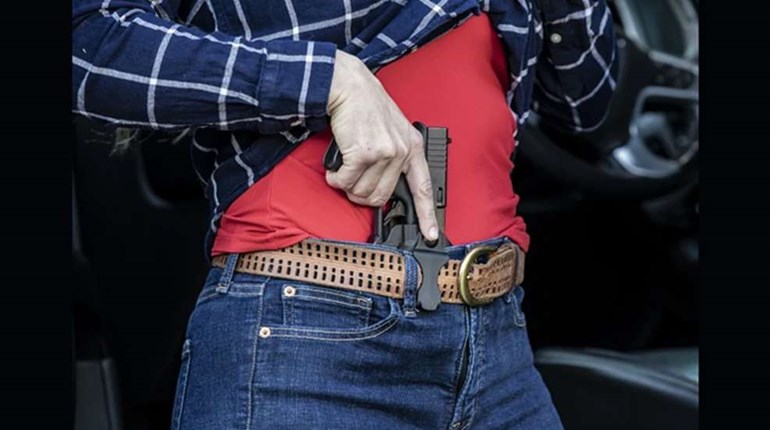
Shown above: Smith & Wesson 351C 11.5-ounce, seven-shot .22 Mag. revolver shown with a Shephard Knives Damascus Clinch Pick. The author's standard loadout on runs.
“Well, it works for me” has become a popular internet meme, utilized by the cognoscenti of the tactical community to make fun of choices that they deem sub-optimal. In fairness, the choices being discussed mostly are sub-optimal but if we stop to examine things, the underlying concept behind “Well it works for me” is sound. What’s sometimes or even oftentimes lacking, is the execution.
A Personal Protection Practice is made up of all of the choices we make to keep ourselves “safe;” or—more accurately—mitigate risk. These choices run the gamut between simple things like choosing to lock your doors at night or looking twice before crossing the street, and can quickly deviate into the esoteric. Choosing between pull-the-dot loops or closed soft loops because of how the holster attachment method affects how the holster prints/doesn’t print with certain wardrobe. There are a lot of choices that can be made. Before you begin to make any of them, however, it’s important to understand and define your core mission.
As a private citizen, your mission is simple: get you, and those under your immediate care, home at the end of the day. This includes not only protecting yourself from attack, but avoiding what Claude Werner would call a “Negative Outcome.” Understand that your practice should (and possibly already does) include measures that you’ve taken to mitigate risk from more-common, everyday dangers. If we expand this concept even further, we could include actively choosing to make healthy lifestyle choices as part of a practice. All of these things can impact one another in both positive and negative ways, and they are all part of a larger whole.
Once you have defined your mission, and framed your thinking to understand how all of your choices are part of that larger whole, it becomes easier to understand why others are making the choices they are. More importantly, it lets you have insight into why those choices may not be the best ones for you.

What I choose to do as an armed professional working inside of the firearm industry might not be feasible for someone who needs to work a 9-to-5 job in an office environment. In my own life, things can change drastically based off of what the day has in store for me. What I carry and what I feel equipped to deal with when I’m dressed in street clothes is drastically different than when I’m dressed to go run or lift at the gym. Being mindful of these things is incredibly important.
If you are making informed decisions when you compromise, you’re doing so because the advantage of what you’ve selected outweighs the disadvantages. For instance, when I run I carry a seven-shot .22 Mag. Smith & Wesson J-Frame revolver. I am compromising capacity and terminal effectiveness by making this choice. If I find myself involved in a violent encounter, these compromises are likely to effect how I choose to deal with the encounter.
Many might consider that revolver to be a sub-optimal choice. However, if we consider the advantage that this gun offers in the form of size and weight, as well as my ability to carry it in a location similar to to my regular carry gun, it makes perfect sense that I would select it for this role. Compromises and "sub-optimal choices" might be acceptable, as long as they are informed and contextually appropriate.
“Well, it works for me” goes terribly wrong when people begin selecting sub-optimal choices in what can only be described as an information vacuum. Not only are these choices sub-optimal, they are touted as the absolute best option available by the person making the decision. As an example, if a private citizen is wearing body armor when they order their Latte at Starbucks, and also happen to be openly carrying a revolver best suited for dealing with marauding, tree-dwelling rodents at close range, they don’t have a Personal Protection Practice. They have a rich fantasy life. I support their right to have it, but I’m not going to tell anyone that they’re making good decisions in that scenario.
For everyone involved, it's important to remember that this will be a lifelong journey for those who choose to pursue it. If you are growing and developing, there are going to be ideas and thoughts that you abandon along the way. The trick is to be constantly working to improve your practice, educate yourself and be mindful of the path.




































